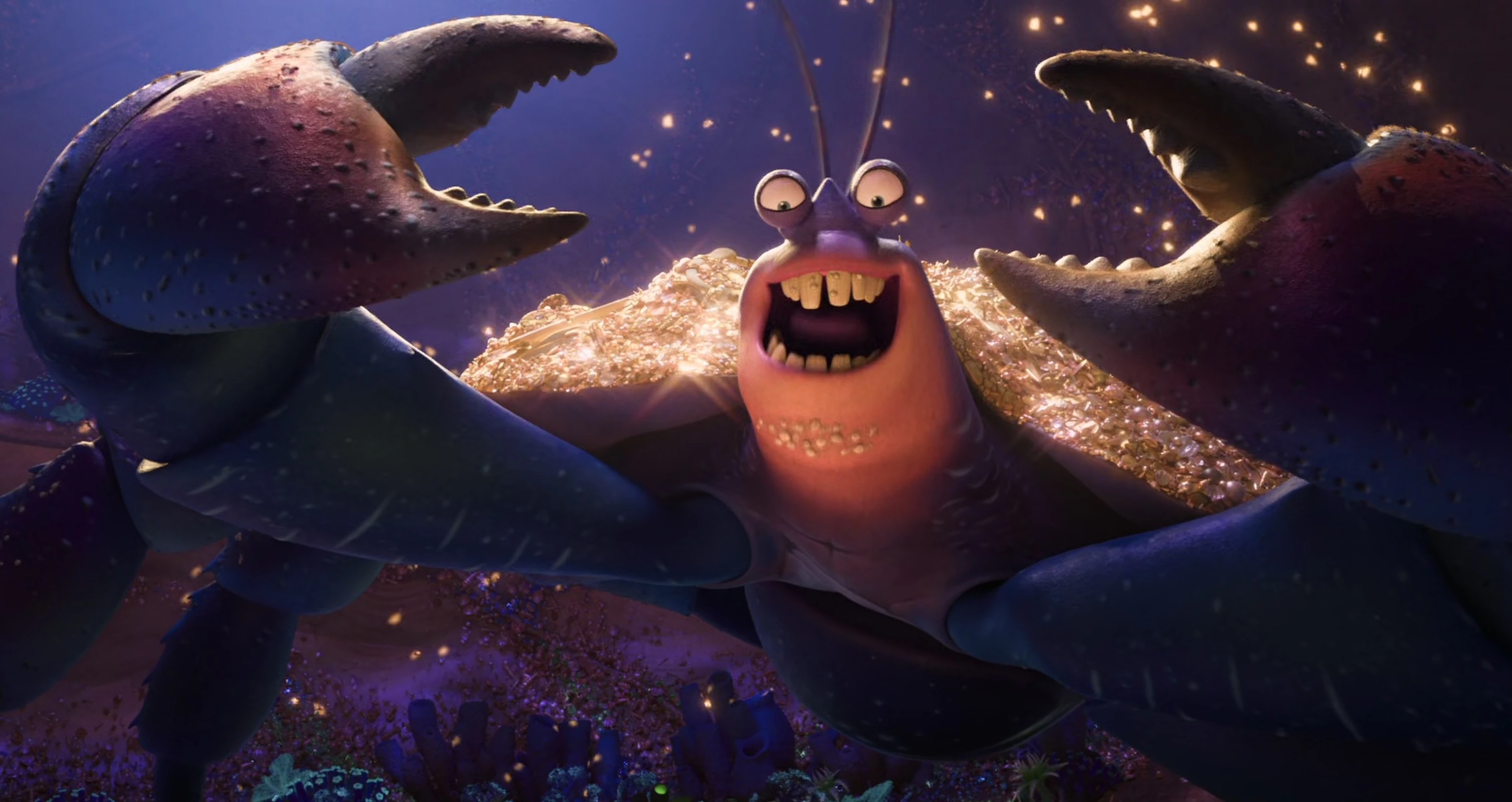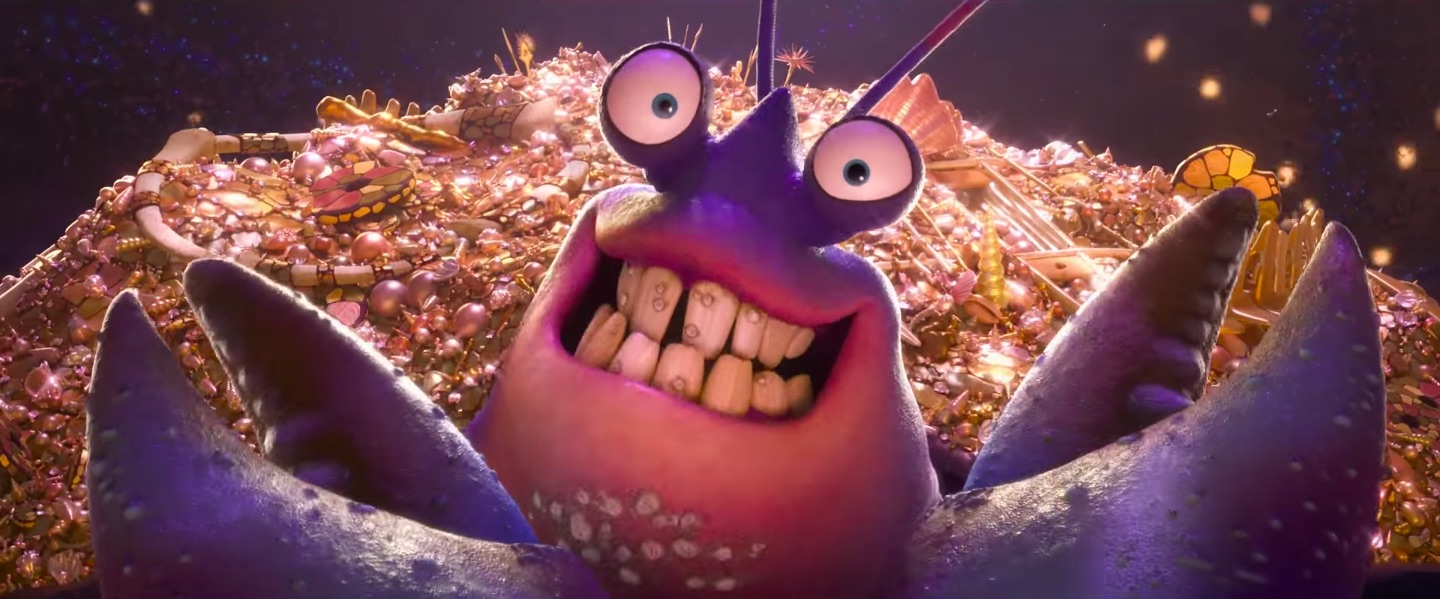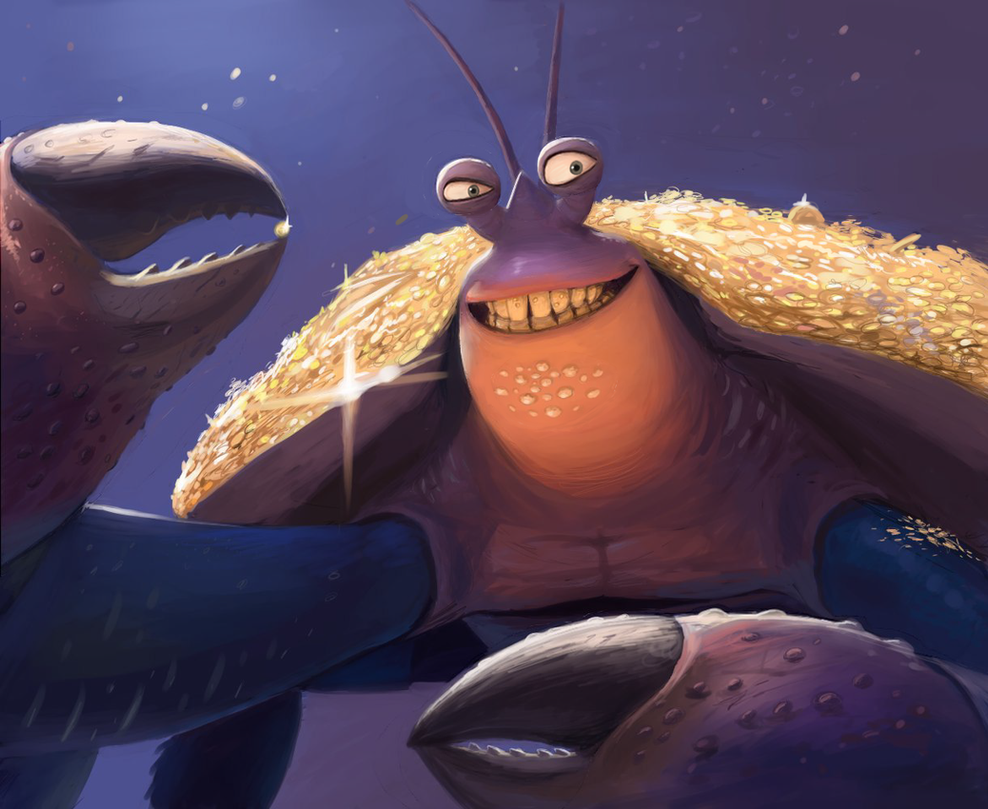What are the characteristics and significance of a particular species of crab, and how does its unique biology contribute to its ecological role?
This specific crab species, characterized by its distinctive features and behavior, plays a significant role within its ecosystem. Its adaptations, including a unique shell structure and specific feeding strategies, contribute to its ecological niche. These adaptations allow it to thrive in its environment, interacting with other organisms and influencing the balance of the local ecosystem.
The species' survival is often linked to factors such as the availability of food sources, the presence of predators, and environmental conditions like temperature and salinity. Understanding these factors and the species' interactions with its environment is crucial to appreciating its ecological importance and potential conservation needs. The species' role in nutrient cycling and the food web is another important aspect. Conservation efforts can address threats to this species' population and maintain biodiversity.
To delve deeper into this specific crab species, the following areas will be explored: its physical characteristics, behavior, habitat, and interactions with its environment. This will provide a comprehensive understanding of the animals ecology and the importance of its conservation.
Crab Species in the Pacific
Understanding specific crab species within the Pacific Ocean, including their ecological roles and adaptations, is crucial for conservation efforts. This focus highlights key aspects for appreciating these species.
- Distribution
- Habitat
- Diet
- Behavior
- Predation
- Conservation
The distribution and habitat of crabs dictate their survival strategies. Diet influences population dynamics, while behavior and predation patterns shape their roles within the food web. Conservation efforts need to address the species' particular vulnerabilities within their environment. For instance, understanding the specific dietary needs of a crab species helps identify potential threats. Changes in the abundance of prey, introduction of invasive species, or habitat degradation all affect the crab's viability. Successful conservation strategies require a holistic approach, recognizing the interconnectedness of these elements to ensure the long-term health of the Pacific crab populations.
1. Distribution
Geographic distribution is a fundamental aspect of understanding any species. For a particular crab species, its distribution patterns provide crucial insights into its ecological requirements, evolutionary history, and susceptibility to environmental changes. Analysis of this distribution is essential for effective conservation strategies. Examining where this crab species thrives illuminates factors like suitable habitat, food availability, and interactions with other organisms.
- Range and Limits
Understanding the precise geographic boundaries of a crab species' distribution reveals its tolerance to different environmental conditions. For example, variations in salinity, temperature, or water depth within its range can define its preferred habitats. Identifying the upper and lower limits of its distribution highlights the critical environmental thresholds influencing its survival.
- Habitat Specificity
A detailed examination of the specific habitats within its distribution area reveals the crab's preferences. Are particular depths, substrate types (sand, coral, rock), or water currents critical to its survival? Such insights pinpoint the essential components of its ecosystem that underpin its population. Identifying key habitats enables targeted conservation efforts.
- Population Density and Trends
Population density variations across its distribution range indicate the crab's success in different environments and factors influencing its distribution. Analyzing long-term trends in population density helps predict future outcomes, revealing the species' response to environmental stressors. Declines may indicate habitat loss or altered ecological conditions, prompting targeted conservation actions.
- Dispersal Patterns and Connectivity
Understanding how a crab species disperses across its range reveals important insights into the factors that influence the distribution's stability. The presence of suitable dispersal corridors connects fragmented populations, enabling genetic exchange and maintaining species diversity. Analysis of these dispersal patterns helps assess the risk of fragmentation and develop effective strategies for conservation.
In conclusion, a thorough investigation of the crab species' distribution provides a detailed understanding of its ecological needs and adaptations, informing strategies to conserve this species within its natural range and ensure its long-term survival.
2. Habitat
Habitat selection is critical for the survival and reproduction of any species, including crabs. A crab's specific habitat requirements directly influence its population dynamics, interactions with other species, and overall ecological role. Understanding the intricate connection between habitat and a particular crab species is fundamental to effective conservation strategies.
- Substrate Preferences
Specific substrates, such as sand, coral, or rocky reefs, influence a crab's movement, foraging, and protection from predators. Different crab species exhibit varied preferences, demonstrating adaptations to specific environments. Understanding these preferences helps determine the crab's habitat suitability and conservation needs within the broader ecosystem.
- Water Depth and Currents
The depth and currents of the water body influence the availability of food, the presence of predators, and the crab's ability to navigate and reproduce. For example, some crabs may prefer shallow, sheltered areas, while others may inhabit deeper waters, reflecting their unique adaptations. These factors directly affect the crab's distribution and abundance.
- Food Availability and Distribution
The distribution of food sources directly correlates with the crab's habitat selection. Crabs relying on specific prey items will be found in areas where those prey are abundant. Changes in the distribution of food resources will alter the crab's habitat choices, potentially impacting its population size. Understanding this relationship is critical for maintaining sustainable populations.
- Predation Pressure and Shelter
The presence of predators is a significant determinant of habitat selection. Crabs will often seek refuge in areas offering protection from predators, such as crevices in rocks, burrows, or dense vegetation. Understanding predator-prey dynamics is crucial for understanding the crab's optimal habitat selection and the overall health of the ecosystem.
In conclusion, habitat is a complex interplay of environmental factors. Analyzing the specific habitat requirements of a crab species, including substrate preference, water depth, food availability, and predation pressures, is vital for effective conservation strategies. This knowledge allows for the identification and protection of crucial habitats that support the species' survival and the wider ecological balance.
3. Diet
Dietary habits are a crucial component of a species' ecological role and survival. For a specific crab species, understanding its diet reveals vital information about its interactions within the ecosystem, its reliance on particular food sources, and its potential vulnerabilities. This analysis is essential for comprehending the species' ecological role and developing effective conservation strategies.
- Species-Specific Prey Preferences
Certain crab species exhibit highly specific feeding preferences, targeting particular organisms. These preferences may reflect adaptations to exploit specific food sources within a given habitat. For example, some crabs might be omnivores, consuming a range of organic matter, while others specialize in filtering plankton or consuming specific types of invertebrates. Recognizing these specific prey preferences provides insight into the intricate ecological relationships within the crab's habitat and the potential consequences of prey population fluctuations.
- Dietary Adaptations and Morphology
A crab's physical characteristics often reflect its dietary adaptations. For example, the morphology of a crab's claws, mouthparts, and digestive system can suggest the types of food it consumes and how it processes them. Crabs with specialized claws might be adapted to crushing hard-shelled prey, whereas those with delicate filtering structures might be suited to consuming smaller organisms. The relationship between structure and diet highlights the remarkable evolutionary adaptations of the crab species.
- Impact on Food Web Dynamics
A crab's diet plays a vital role in the broader food web. It influences the populations of other organisms. For instance, if a crab species primarily feeds on a particular type of shellfish, fluctuations in the shellfish population can indirectly impact the crab's population. Conversely, changes in the crab population can affect the abundance of other species that rely on the crab as a food source. This interconnectedness underscores the importance of understanding dietary relationships for comprehending entire ecosystem dynamics.
- Dietary Shifts and Environmental Change
Environmental changes can lead to alterations in a crab's diet. For example, a shift in the availability of preferred prey species might compel a crab to consume alternative food sources, potentially impacting its overall health. This plasticity of diet highlights the species' resilience but also its vulnerability to environmental disturbances. Understanding these responses is crucial for developing effective adaptation strategies for conservation.
In summary, analyzing a crab species' diet provides a rich understanding of its ecological niche, its relationships within the food web, and its potential vulnerability to environmental changes. This knowledge is fundamental for developing effective conservation strategies that consider the complex interplay between diet and the survival of the species.
4. Behavior
Behavioral patterns are integral to understanding a species' survival and ecological role. For a particular crab species, observable behaviors, including foraging strategies, social interactions, and reproductive activities, offer crucial insights into its ecological niche and response to environmental stimuli. This section explores key behavioral facets of the species, highlighting their importance in its overall ecological context.
- Foraging Strategies
Foraging behaviors directly influence a crab's nutritional intake and energy expenditure. Understanding the specific methods employed by this crab specieswhether it scavenges, actively hunts, or filters feedsprovides insights into its preferred food sources and the ecological interactions involved. Observations of foraging behaviors in natural habitats can reveal the crab's role in maintaining ecosystem balance and potential vulnerabilities to changes in prey availability.
- Social Interactions
Social interactions, if present, reveal important aspects of the species' organization and dynamics. Observations of interactions like aggregations, territorial displays, or parental care provide insights into intraspecific relationships, competition, and the species' evolutionary history. Social structures directly influence the species' ability to adapt to environmental fluctuations and coordinate activities crucial for survival and reproduction.
- Reproductive Behaviors
Reproductive behaviors, crucial for species continuity, are characterized by specific patterns related to mating rituals, nest building, and parental care. Understanding the timing, frequency, and intensity of these behaviors reveals the crab's reproductive strategy and vulnerability to environmental factors affecting its breeding success. These behaviors are vital for ensuring the long-term sustainability of the species.
- Responses to Environmental Stimuli
Observing how this crab species responds to environmental stimuli, such as temperature changes, predation threats, or resource scarcity, is essential for understanding its adaptability. Reactions to environmental stressors, whether through avoidance, aggression, or behavioral modification, provide insights into the crab's tolerance limits and ability to cope with environmental fluctuations. Identifying behavioral indicators of stress can also highlight conservation concerns related to habitat degradation or pollution.
In conclusion, understanding the behavioral repertoire of this specific crab species offers a multifaceted perspective on its ecology. By combining observations of foraging strategies, social interactions, reproductive behaviors, and responses to environmental changes, a comprehensive understanding of the species' ecological role and potential conservation needs becomes evident. This multifaceted approach enhances the efficacy of conservation efforts aimed at safeguarding the long-term sustainability of this crab species within its natural habitat.
5. Predation
Predation is a critical ecological factor influencing the survival and population dynamics of any species, including this particular crab species. Understanding predation pressures on this species is essential for developing effective conservation strategies and comprehending its position within the wider ecosystem. This analysis examines the various aspects of predation's impact on the crab, highlighting the interplay between predator and prey.
- Predator-Prey Interactions
Predator-prey dynamics are fundamental to ecological balance. This crab species likely experiences predation by a range of animals, including fish, birds, marine mammals, or other larger invertebrates. The specific predator and prey interactions are shaped by the crab's behavior, distribution, and the environment. Understanding the types and behaviors of potential predators, like their hunting strategies and preferred habitats, offers insights into the crab's adaptations and vulnerabilities.
- Impact on Population Dynamics
Predation pressure significantly affects population size and distribution. A high predation rate can lead to population declines, while a low rate allows for growth and expansion. Variations in prey abundance can also influence predation rates. Understanding the interplay between these factors provides insights into the long-term viability of this crab population. This interplay requires considering seasonal fluctuations or the introduction of new predators to the environment.
- Adaptations to Predation
To counteract predation, this crab species likely possesses various adaptations. These could include camouflage, rapid movement, shell hardness, behavioral strategies like hiding in crevices, or chemical defenses. The presence of such adaptations underlines the crab's evolutionary response to its environment, shaping its interactions with predators and influencing its ecological niche.
- Conservation Implications
Recognizing the predators affecting this crab is crucial for conservation. Identifying areas with high predation risk, influencing factors, and effective mitigation strategies are paramount. This includes protecting habitats with high predator densities, monitoring population trends, and investigating the impact of changes in predator populations.
In conclusion, predation exerts a powerful influence on the crab species, shaping its population size, distribution, and behavior. Effective conservation strategies must consider both the prey and predator ecology, addressing the vulnerabilities of the crab and proactively mitigating risks associated with high predation. Analyzing the interplay between predation, the crab's adaptations, and environmental factors yields a comprehensive understanding essential for protecting this crab species in its natural habitat.
6. Conservation
Conservation efforts are crucial for the survival of any species facing threats. For a particular crab species, effective conservation strategies must address the specific challenges impacting its population. This section details critical components of a conservation program tailored to the species, emphasizing the interconnectedness of various factors influencing its well-being.
- Habitat Protection and Restoration
Protecting and restoring crucial habitats is fundamental. This encompasses preserving existing areas suitable for the crab's life cycle, including breeding grounds, feeding zones, and shelter. Restoration efforts might involve removing human-induced stressors like pollution or habitat destruction to facilitate recovery. Examples include creating artificial reefs or restoring mangrove forests, enhancing the crab's available environment. Failure to adequately protect the crab's habitat directly impacts population viability.
- Management of Predation and Threats
Understanding and mitigating predation pressures is vital. This involves identifying key predators and assessing their impact on the crab population. Addressing factors increasing predation risk, such as habitat alteration or overexploitation of prey species, is crucial. Examples include controlling invasive species preying on the crab or establishing protected areas to reduce exposure to predators. Managing predation pressures directly influences population health and sustainable survival.
- Monitoring and Population Assessment
Regular monitoring of population size, distribution, and health is essential to identify trends and implement timely interventions. Data collection regarding breeding success, mortality rates, and recruitment rates provide crucial information. Examples include using mark-and-recapture studies, camera traps, or aerial surveys. Accurate population assessments guide management actions and indicate the effectiveness of conservation efforts.
- Public Awareness and Community Engagement
Engaging local communities in conservation efforts is important. Raising awareness about the ecological significance of the crab and its habitat and involving communities in conservation activities is essential. Examples include community-based conservation programs, education initiatives, or the establishment of protected areas managed by local stakeholders. Public support and cooperation directly contribute to the long-term viability of conservation efforts.
In conclusion, effective conservation of a specific crab species requires a multifaceted approach. By addressing habitat protection, predation management, population assessment, and community engagement, conservation efforts can be targeted and effective. These actions ultimately contribute to the long-term survival of the species and the overall health of the ecosystem.
Frequently Asked Questions about [Crab Species]
This section addresses common inquiries about [Crab Species], aiming to clarify key aspects of its biology, ecology, and conservation status.
Question 1: What is the defining characteristic of this crab species?
The defining characteristic of this crab species is [brief, factual description of a unique physical trait, behavior, or habitat]. This trait distinguishes it from related species and helps identify it in its environment.
Question 2: Where is this crab species found?
This crab species has a documented distribution in [geographic region]. Specific habitats within this range, such as [specific habitat type], are crucial to its survival.
Question 3: What does this crab species eat?
The diet of this crab species consists primarily of [list key food items]. Variations in prey availability can impact population size and distribution.
Question 4: What are the major threats to this crab species?
Major threats to this crab species include [list key threats, e.g., habitat loss, pollution, climate change]. These factors can significantly impact population numbers and overall survival.
Question 5: What conservation efforts are being undertaken to protect this crab species?
Conservation efforts include [mention specific actions, e.g., habitat restoration, predator control, public education]. Ongoing research and monitoring are crucial for evaluating the effectiveness of these measures.
Understanding these key aspects clarifies the ecological role and conservation priorities of this crab species.
The following sections will delve deeper into specific details regarding its habitat, behavior, and the complexities of conservation efforts.
Conclusion
The exploration of [Crab Species], a critical component of Pacific ecosystems, reveals multifaceted ecological intricacies. Analysis of its distribution, habitat preferences, dietary habits, behavioral patterns, and vulnerability to predation highlights the delicate balance within its environment. Understanding these interconnected factors underscores the importance of proactive conservation measures. The species' specific adaptations and dependencies on particular environmental conditions demonstrate its vulnerability to human-induced changes, emphasizing the necessity of habitat protection and mitigation of threats to maintain population viability.
The ongoing health and survival of [Crab Species] depend fundamentally on a comprehensive understanding of its ecological role. Continued monitoring, coupled with targeted conservation strategies focusing on habitat preservation, predator management, and community engagement, is essential. Failure to address these issues threatens not only the survival of this specific species but also the broader ecological stability of the Pacific region. The urgent need for sustained conservation efforts necessitates collective action, emphasizing the interdependency between biological systems and human responsibility in safeguarding biodiversity.


